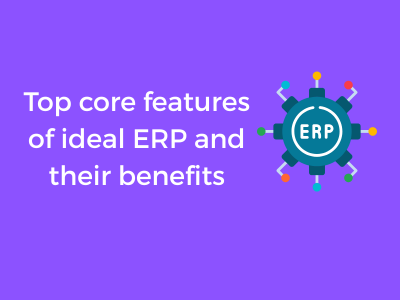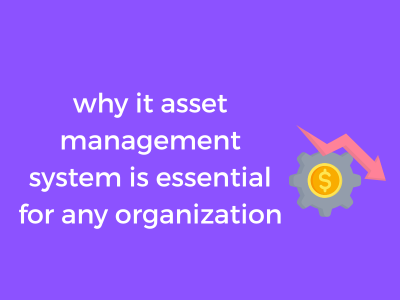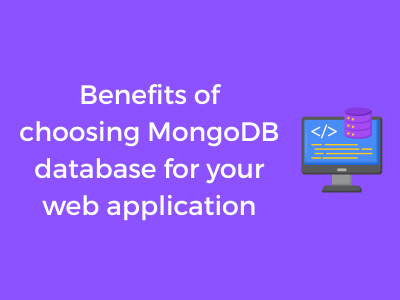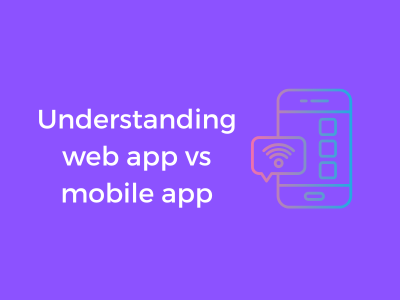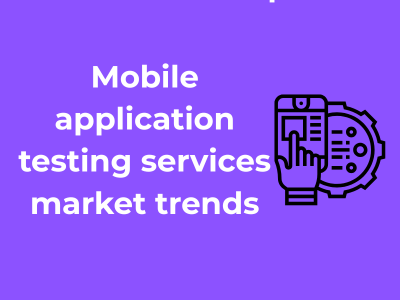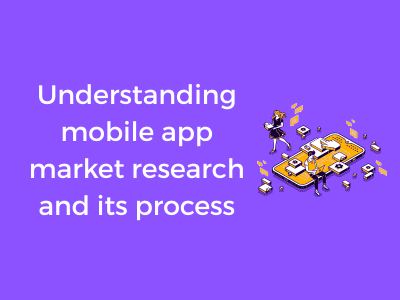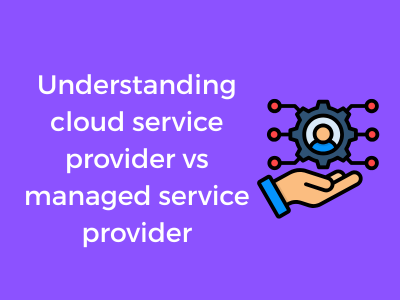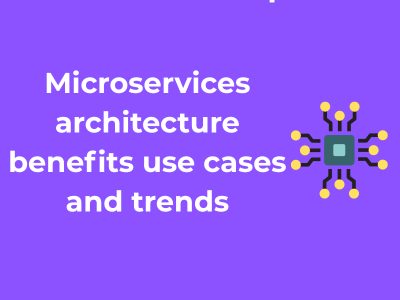Let’s face it – in today’s fast-paced world of business, scattered and inconsistent data is the ultimate productivity killer. Imagine trying to piece together a puzzle when half the pieces are missing or located in another room. That’s exactly what running a business without unified data management feels like. Thankfully, this is where an ERP (Enterprise Resource Planning) system shines as your business’s ultimate efficiency ally!
So, what’s the buzz about Unified Data Management? It’s simple yet transformative. Unified data management serves as the backbone of an ideal ERP system. It consolidates various streams of information, ensuring that everything – be it accounting, sales, HR, or inventory – stays synchronized across the organization. Think of it like having a single source of truth that keeps everyone on the same page, all the time.
Why unified data matters
The concept of unified data isn’t just about convenience; it directly impacts your bottom line. Let’s dive into the key benefits:
- Eliminates Silos: No more jumping between spreadsheets, shared drives, or different software platforms. Unified data means you’ll have broader visibility and a more cohesive flow of operations.
- Improved Accuracy: When data is integrated into a single system, it drastically reduces the chances of duplicate or mismatched information. And let’s be real – accurate data equals better decisions.
- Enhanced Collaboration: Teams no longer work in isolation. With centralized data, departments can seamlessly share updates and insights, breaking down communication barriers.
- Faster Processing: Updating one part of your ERP automatically reflects across all connected areas, saving hours of manual labor and minimizing the risk of human error.
- Better Compliance: For industries governed by strict regulations (hello, healthcare, or finance!), having all data in one place makes audit trails a breeze. Keeping track of who did what and when has never been easier.
Aligning your ERP goals
You may be wondering, “Is unified data management suitable for my business size?” Absolutely! Whether you’re running a small startup or managing a growing enterprise, it ensures that your operations scale with ease. As your company grows and tackles more challenges, centralizing your data will prevent information overload and maintain order amidst the chaos.
Pro Tip: When choosing an ERP system, always ask your vendor how easily it integrates with existing software and whether it offers migration tools to consolidate legacy data. The point of unified data management is seamless integration, so don’t settle for partial solutions!
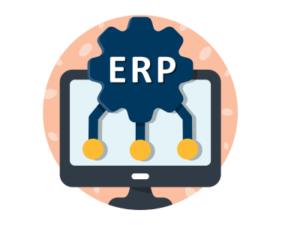
Real-Time Reporting: Keeping Decisions Updated
Imagine this – you’re driving down a highway, but instead of clear road signs and a GPS updating you on traffic, you’re navigating solely based on outdated maps. Sounds stressful, right? That’s exactly what it feels like when businesses operate without real-time reporting! In today’s fast-paced world, having access to live and accurate data isn’t just a “nice-to-have”—it’s an absolute necessity for businesses to stay competitive and proactive.
What is Real-Time Reporting?
In simple terms, real-time reporting means having access to live, up-to-the-minute information about your business operations. It combines data from various parts of your company—like sales, manufacturing, or customer support—and displays it in an understandable and digestible format, such as dashboards or visual graphs.
Unlike traditional reporting methods, where periodic reports might take days or weeks to generate, real-time reporting eliminates lag. Think of it as having a live-stream view into how your business is performing right now. Cool, right?
Why Does Real-Time Reporting Matter?
Great question! Let’s look at a few key benefits:
- Faster Decision-Making: When you have real-time insights, you can make quicker and more informed decisions. Imagine spotting a dip in sales or a sudden spike in costs as it happens—addressing these immediately can potentially save you time, money, or even reputation.
- Early Problem Detection: Small issues can escalate into big problems if left unchecked. Real-time analytics acts like a vigilant watchtower, helping you identify red flags before they turn into crises.
- Empower Your Team: Access to updated metrics enables your team to take ownership of their goals. Whether it’s a sales rep tracking daily targets or a warehouse manager monitoring inventory, everyone stays on the same page.
- Enhancing Customer Experience: Real-time data equips companies to respond quickly to customer needs. Imagine a customer complaint being resolved almost instantly because your team already has all the updated information they need. This builds trust and loyalty.
How Does Real-Time Reporting Work in an ERP System?
Within an ERP (Enterprise Resource Planning) framework, real-time reporting integrates data across various functions—finance, operations, supply chain, and more—and pushes it into a centralized system. Essentially, your ERP becomes a crystal ball, offering you a clear and moment-by-moment look at your entire organization.
Many modern ERP solutions even include customizable dashboards, so you can tailor the information you see based on roles. For example, your CFO might view budget forecasts, while your marketing team tracks online engagement stats. Everyone gets what they need without being bogged down by irrelevant data.
Pro Tips for Leveraging Real-Time Insights Like a Pro
- Start with Key Metrics: Avoid overwhelming yourself with all the data at once. Identify the most critical areas where real-time reporting will drive value and focus on those first.
- Invest in Training: Ensure your team understands how to interpret and act on real-time data. Data alone won’t make decisions; it’s how you use it that counts!
- Keep It Visual: Visual dashboards make it easier to grasp trends and spot anomalies at a glance. Don’t underestimate the power of a good graph!
Inventory Oversight: Synchronizing Supply and Demand
Let’s talk inventory – the beating heart of any business that deals with products. Managing inventory efficiently is not just about knowing what’s in stock but ensuring that supply and demand are perfectly balanced. This seemingly simple concept can get wildly complex in practice, but that’s where an ideal ERP (Enterprise Resource Planning) software swoops in like a superhero.
Here’s the deal: inventory oversight in an ERP isn’t simply tracking what’s on your shelves. Oh no, it’s much more than that. It’s about synchronization, efficiency, and data-driven decision-making. Imagine never having to deal with “out of stock” nightmares or sitting on inventory that’s collecting dust. Sounds magical, right?
What Makes ERP Inventory Management Stand Out?
Let me break it down for you:
- Complete Visibility: ERPs give you a bird’s-eye view of your entire inventory – from raw materials to finished goods – all in one place. You can dive deep, checking details like SKU-level data or stock levels across multiple warehouses.
- Demand Forecasting: Using historical data and trends, an ERP can predict future demand, helping you stay ahead of the curve and avoid overstock or shortage scenarios.
- Automated Reordering: Tired of manual stock checks and scrambling to place orders? An ERP can automate reordering when inventory dips below specific thresholds, ensuring seamless replenishment.
- Real-Time Updates: Whether you’re dealing with sudden demand spikes (hello, seasonal sales!) or supply chain hiccups, an ERP updates inventory data in real time, so you’re always in the know.
How Synchronizing Inventory Benefits Your Business
So, why should you care? Because getting control over inventory can positively ripple out through your entire organization. Here’s how:
- Reduced Carrying Costs: Inventory costs money – storage, handling, obsolescence, you name it. Efficient oversight means no more overstocking, which translates to big savings.
- Avoiding Stockouts: Picture this: a customer is all set to buy, but you’re sold out. Heartbreaking, right? Proper inventory management ensures you always meet customer demand.
- Enhanced Customer Satisfaction: Delivering the right products at the right time is key to keeping customers happy – and a happy customer is often a loyal customer.
- Data for Smarter Projections: With real-time inventory reports and analytics, you can make informed decisions about expanding product lines, trimming down slow movers, or launching promotions.
Pro Tips for Maximizing ERP Inventory Features
Want to really ace inventory management? Here are some tips to get you started:
- Keep Your Data Clean: Start with accurate, updated data when setting up ERP inventory tools. Garbage in, garbage out, as they say!
- Train Your Team: Equip your employees with the know-how to maximize ERP features. The better your team understands the system, the more effective it’ll be.
- Integrate, Integrate, Integrate: Ensure your ERP inventory management ties seamlessly into procurement, production, and sales for a truly unified approach.
Streamlined Financial Management for Scalability
When it comes to growing your business and managing operations effectively, financial management is literally the lifeblood of your enterprise. A robust ERP solution with streamlined financial management capabilities can transform chaos into order and give you the tools you need to make smart, data-driven decisions. Let’s break down why this feature is critical and how it benefits your organization in the long run.
Why Streamlining Financial Management Matters
Imagine trying to manage multiple bank transactions, analyze revenue trends, track expenses, and even prepare for audits using spreadsheets—or worse, jotting everything down in multiple systems that don’t communicate with each other. Sounds like a nightmare, right?
Streamlined financial management centralizes all these processes into a unified platform, making life easier. It’s not just about keeping your accounting neat; it’s about ensuring every penny is accounted for efficiently while still keeping room for your business to grow in size and complexity. After all, as your business scales, so do your financial transactions!
Benefits of Streamlined Financial Management in ERP
Let’s dive into the specific ways your ERP system’s financial management feature can make running your business smoother and more scalable:
- Automated Processes: From invoice generation to tax calculation, ERP systems automate mundane financial tasks. This not only reduces the scope of errors but also saves precious time which you’d rather spend on strategic growth initiatives.
- Accurate Budget Forecasting: With built-in analytics and forecasting tools, you can prepare a budget that reflects real-time expenses and anticipated income. No more guesswork or overspending!
- Compliance Made Easy: Regulatory frameworks can be complex, but an ideal ERP ensures your financial practices are always in line with local and global compliance standards. No last-minute panic during audits!
- Real-Time Financial Insights: Need to check how a specific department is spending its budget or what your cash flow looks like mid-quarter? With ERP, you get real-time dashboards that keep you informed at all times.
- Seamless Reporting: Forget shuffling through documents to piece together end-of-month reports. Your ERP generates standard and customized financial reports with a few clicks, making it easier to share insights with stakeholders.
Scaling Without Stress
One of the most exciting aspects of a streamlined financial management feature is its adaptability. As you add new business units, open stores in new regions, or explore new revenue streams, your financial system expands to accommodate these changes. It’s like having a partner that grows with you, ensuring your expanding business doesn’t outgrow its tools. Imagine focusing on growth instead of being bogged down by adapting your workflows every time something changes!
Pro Tip for Choosing ERP Financial Tools
Don’t adopt a one-size-fits-all approach. Evaluate whether the ERP solution you’re considering aligns with your industry-specific financial complexities. Whether it’s multi-currency support for global businesses or agile invoicing for service providers, tailored tools are key.
Customizing User Experience to Match Workflows
Let’s face it—nobody wants to deal with an Enterprise Resource Planning (ERP) system that feels clunky and out-of-touch, much less one that doesn’t align seamlessly with their daily tasks. This is where customizing the user experience (UX) becomes a game-changer. It’s all about molding the system so that it doesn’t just serve your business needs but becomes an intuitive, productivity-boosting extension of your team. Sounds exciting, right? Let’s walk through why this feature deserves center stage in any ideal ERP system and explore how it benefits your team.
Why Customization Matters
Businesses don’t all think, move, or work the same way—so why should their ERP systems be one-size-fits-all? By tailoring the system to match your workflows, you’re effectively eliminating those awkward moments where teams have to “figure out” workarounds or use unnecessary steps that take time away from what really matters. Customization ensures your ERP complements and enhances your current processes instead of fighting them like a clumsy partner in a three-legged race.
Benefits of a Tailored User Experience
There are some serious perks to customizing your ERP’s UX to align with your workflows. Let’s break them down:
- Boosted Productivity: When employees have an interface designed specifically for their tasks, navigating the system becomes second nature. No hunting for the right tools or wasting time on unnecessary clicks. Just smooth sailing.
- Improved Employee Satisfaction: A user-friendly ERP isn’t just easier to use—it’s more enjoyable. Happier employees are more engaged, and that engagement ripples through your organization.
- Faster Adaptation: No need for endless training sessions. When the ERP looks and feels familiar, onboarding becomes quicker and less stressful for everyone involved.
- Lower Error Rates: A streamlined layout and optimized workflows mean fewer mistakes, thanks to fewer opportunities for confusion or missteps. And let’s be honest—less time on troubleshooting leaves more time for productivity.
Smart Strategies to Get Started
The idea of customizing can sound a little overwhelming, but don’t worry—it’s more straightforward than it seems. Keep these expert tips in mind as you dive in:
- Map Out Existing Workflows: Before tweaking anything, understand how your team operates. What steps do they follow daily? Where do bottlenecks occur?
- Engage Different Departments: Don’t stop at IT or management—loop in your frontline staff! They’re the real MVPs when it comes to identifying what they need.
- Work with Vendors: Many ERP providers offer customization assistance. Don’t be shy about asking for their expertise—it’s literally what they’re there for.
- Iterate and Improve: Don’t settle. As your business evolves, your ERP should too. Regularly review and tweak the setup to keep everything aligned with your shifting goals.
Integrated E-commerce for Expanding Sales Channels
If you’re looking to expand your business and tap into new customer bases, then an Enterprise Resource Planning (ERP) system with integrated e-commerce functionalities might just be the golden ticket. Let’s dive into why this feature is a game-changer and how it can revolutionize your sales strategy. Buckle up, because this is where the magic happens!
What is Integrated E-commerce?
Simply put, integrated e-commerce ensures that your ERP system and your online store work seamlessly together. Think of it like a perfectly choreographed dance: your inventory updates in real-time on your website, customer orders flow directly into your operations, and sales data syncs effortlessly into your analytics. No manual data entry, no messy spreadsheets – just smooth, synchronized operations.
Why Should You Care About It?
In today’s world, e-commerce is not just “nice to have” – it’s essential for businesses aiming for scalability and broader market reach. Here are some key reasons why integrating e-commerce with ERP is a crucial feature for your growth strategy:
- Streamlined Operations: Forget the headaches of disconnect between your online store and backend processes. An integrated system ensures that every order, return, or update is automatically captured and processed.
- Customer Satisfaction: When stock levels are accurate, delivery times are clear, and communication is on point, your customers are far more likely to be grinning from ear to ear.
- Enhanced Scalability: Whether you want to sell domestically or globally, ERP with integrated e-commerce can support multi-channel sales without breaking a sweat, making sure your data is consistent no matter how many platforms you use.
- Faster Decision-Making: With real-time data at your disposal, you can identify trends, adjust inventory, or plan promotions with confidence and agility.
- Reduced Errors: Ditch the manual data entry and human mistakes. With automation, your orders, payments, and inventory reconciliations will be flawless – no more oops moments!
The Benefits of Adaptability and Growth
Venturing into new sales avenues can feel daunting. But a good ERP system coupled with integrated e-commerce can make it a breeze. For example:
- Global Mobility: You can expand into international markets with tools that support multiple currencies, languages, and tax structures, all without additional stress or resources.
- Multi-Platform Outreach: An integrated setup allows you to manage multiple stores, marketplaces (like Amazon or eBay), and even social media sales, all through one consolidated interface.
- Real-Time Insights: You’ll be able to predict customer preferences and fine-tune your product offerings based on live analytics – now that’s smart business!
Authority’s Pro-Tip: Choose a Scalable Solution
When selecting an ERP with e-commerce capabilities, ensure that the platform can grow alongside your business. Start with the essentials but envision the long-term: adding new product lines, entering new regions, or even diving into B2B e-commerce. Your system should grow with you, not hold you back.
Built-In Security Measures to Protect Enterprise Data
Let’s talk about something that’s incredibly crucial yet often overlooked when choosing an ERP system: security. In today’s world, enterprise data is the crown jewel for any business, and protecting it from breaches or unauthorized access is non-negotiable. With cyber threats becoming more sophisticated, ensuring an ERP system has built-in security measures should be at the top of your list.
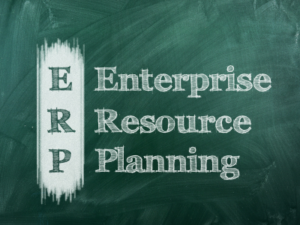
Why Is ERP Security a Big Deal?
Think of your ERP system as the vault containing all your critical business information—financial data, customer details, supply chain operations, and even employee records. If that information gets compromised, it’s not just about financial loss. You’re also risking customer trust and your company’s reputation. An ideal ERP system shields your data like a robust fortress, safeguarding it from both external hackers and internal mismanagement.
Key Features to Look for in Built-In Security
So, what exactly should you look for when evaluating an ERP system’s security capabilities? Here’s a quick rundown:
- Role-Based Access Control (RBAC): This ensures that users can only access the information and tools relevant to their roles. For example, your accounting team doesn’t need access to product development details, right?
- Data Encryption: Whether data is in transit or at rest, encryption ensures that sensitive information remains unintelligible to unauthorized eyes.
- Audit Trails: Built-in logs and traceability allow you to monitor who accessed what and when. This helps in spotting unusual activity early on.
- Multi-Factor Authentication (MFA): Adding an extra layer of verification ensures that even if one credential is compromised, unauthorized access can still be intercepted.
- Automatic Updates: Cyber threats evolve constantly. ERP systems that receive regular security patches and updates help combat new vulnerabilities.
Benefits of Enhanced ERP Security
The impact of built-in ERP security extends beyond just “feeling safe.” It brings concrete advantages that touch every aspect of your business:
- Peace of Mind: Knowing your sensitive business data is protected allows you to focus on growth and innovation rather than on ‘what-ifs.’
- Compliance with Regulations: Many industries are governed by strict regulations regarding data protection, such as GDPR or HIPAA. A secure ERP system keeps you compliant and avoids hefty fines.
- Improved Productivity: When employees access systems seamlessly but securely, it minimizes disruptions while promoting accountability.
- Long-term Cost Savings: Addressing security breaches can be a resource-draining nightmare. Investing in secure systems significantly lowers the risk of such incidents, saving you hefty expenses down the road.

